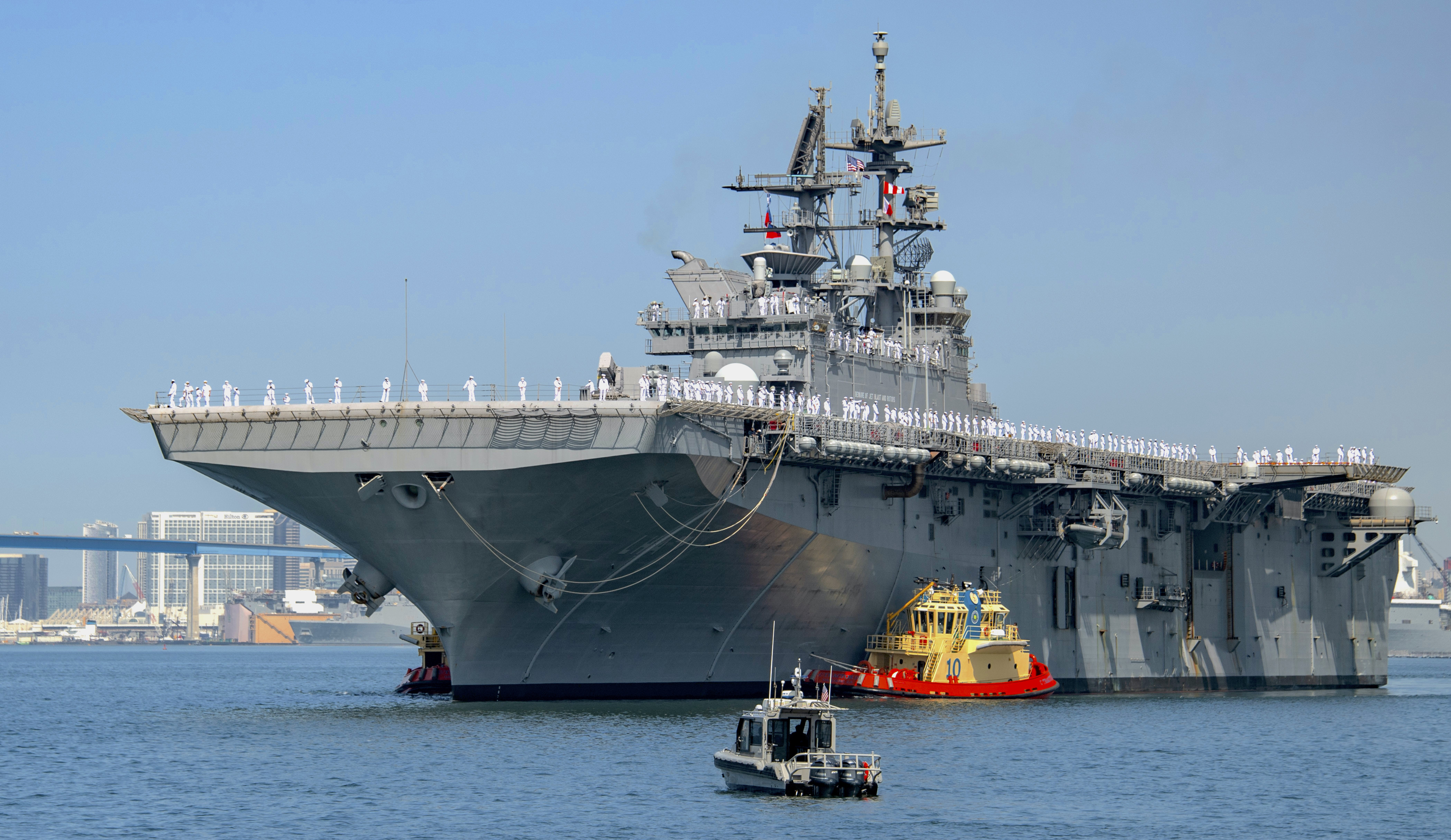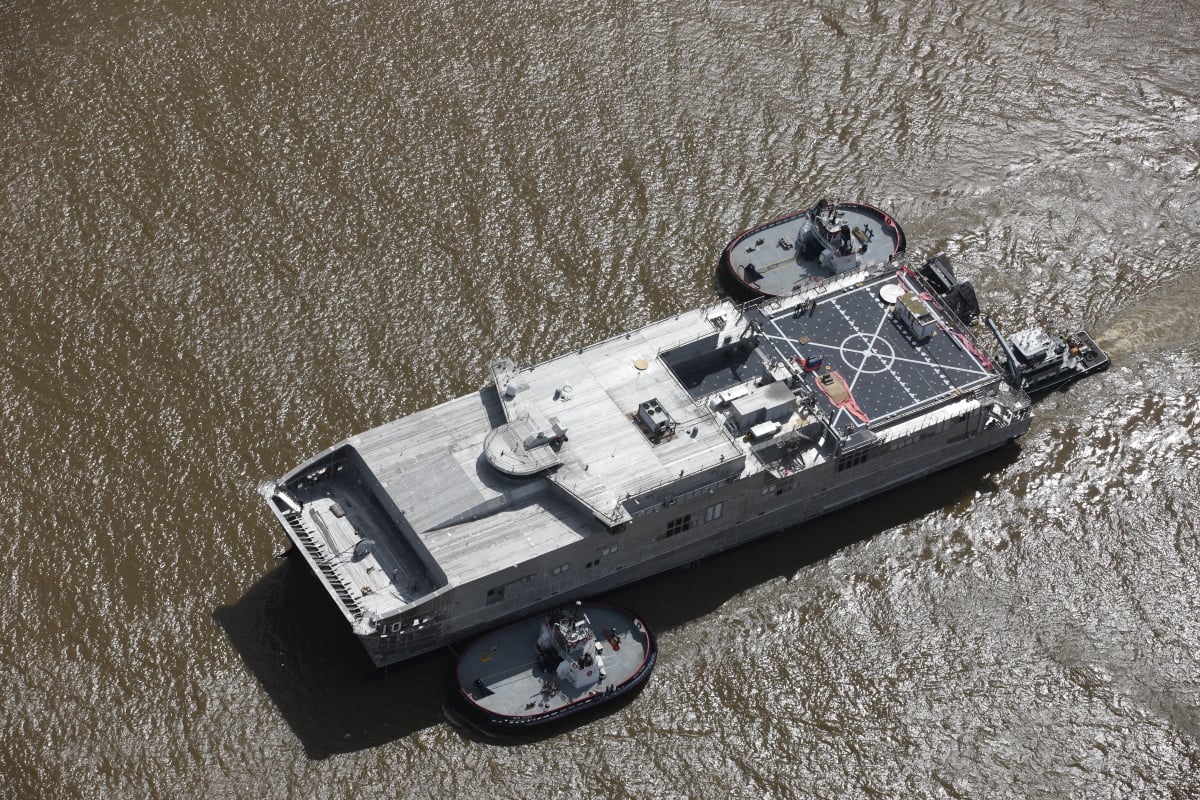
This story has been updated to include more information about the amphibious warship the HASC bill authorizes.
The House Armed Services Committee early Thursday approved its annual defense policy bill, boosting the Navy’s shipbuilding account and authorizing 13 battleforce ships.
The Fiscal Year 2022 National Defense Authorization Act passed out of committee in a 57-2 vote early Thursday morning.
The NDAA authorizes a total of three Arleigh Burke-class destroyers, two Virginia-class attack boats, one Constellation-class frigate, one America-class amphibious assault ship, two EPFs, two John Lewis-class fleet oilers, one Navajo-class towing, salvage and rescue ship, and one T-AGOS(X) ocean surveillance ship.
The bill’s successful passage out of the panel comes after lawmakers on Wednesday adopted an amendment that would increase the Defense Department’s topline by $23.9 billion. That same amendment also authorized funding for four more battlefore ships – one Arleigh Burke-class destroyer, one America-class amphibious assault ship, one Expeditionary Fast Transport (EPF) ship, and one T-AO-205 John Lewis-class fleet oiler – on top of the eight the HASC seapower and projection forces subcommittee had authorized in its mark.
The total number of ships the committee’s bill authorized is five more than the eight battleforce ships the Navy asked for in its FY 2022 budget request.
An amendment proposed by Rep. Jerry Carl (R-Ala.), who represents Mobile, authorized an additional $270 million for a second Expeditionary Fast Transport (EPF) ship. Mobile is home to Austal USA, which builds the EPF. The panel adopted the amendment in a voice vote, the HASC majority announced on Twitter.

The amphibious ship the HASC is authorizing in the bill is LHA-9. While Congress previously appropriated and authorized funding for LHA-9, under the Trump administration some of that funding was redirected to build physical barriers along the U.S.-Mexico border. The effort in the FY 2022 policy bill is meant to authorize full funding for the ship, USNI News understands.
Some lawmakers have also been pushing the Navy to execute a four-ship buy of amphibious warships. Congress in the FY 2021 policy bill provided the service with the authority to execute a multi-ship buy that would include one LHA and three amphibious transport docks. While a Navy official told Congress in June that the service had reached a preliminary agreement with Huntington Ingalls Industries on the four-ship buy, the execution may be put on hold pending a new force structure assessment, USNI News previously reported.
While the Navy only asked for one destroyer in its budget request despite its commitment to a two-per-year multi-year procurement contract, the HASC seapower mark authorized the second destroyer. The seapower panel had authorized two Arleigh Burke-class destroyers, two Virginia-class submarines, one Constellation-class frigate, one Navajo-class towing, salvage and rescue ship, one John Lewis-class fleet oiler and one T-AGOS(X) ocean surveillance ship. The mark only authorized one towing, salvage and rescue ship, despite the Navy’s request for two, yielding the same net number of battleforce ships as the Navy’s request.
In an hours-long markup, the HASC went through hundreds of amendments, including one proposed by Rep. Mike Gallagher (R-Wis.) to place additional limitations on retired officers serving as the Pentagon’s top civilian. Gallagher’s amendment would extend the amount of time an officer at the O-6 level or higher must be out of uniform, before he or she could be tapped as the defense secretary, from seven years to 10 years. A person who has not been out of uniform for 10 years would need a waiver that three-fourths of the House and Senate support. The amendment was adopted.
While the HASC’s push to increase the Pentagon topline mirrors a similar move by the Senate Armed Services Committee, which increased the Defense Department topline by $25 billion in its version of the defense policy bill, it’s unclear where appropriators will fall. The House Appropriations Committee approved a defense spending bill in July that had a $706 billion topline, which aligns with the Biden administration’s request after factoring in another $11 billion in a separate military construction bill.





